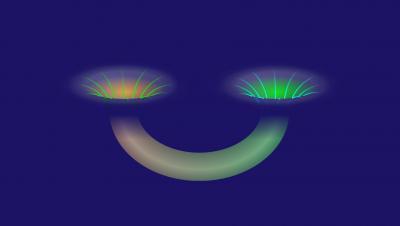Quantum entanglement, the phenomenon of quantum mechanics that Albert Einstein once referred to as "spooky action at a distance," could be even spookier - hypothetically.
Quantum entanglement occurs when a pair or a group of particles interact in ways that dictate that each particle's behavior is relative to the behavior of the others. In a pair of entangled particles, if one particle is observed to have a specific spin, for example, the other particle observed at the same time will have the opposite spin.
The "spooky" part is that, as research has confirmed, the relationship holds true no matter how far apart the particles are – across the room or across several galaxies. If the behavior of one particle changes, the behavior of both entangled particles changes simultaneously, no matter how far away they are.
A pair of physicists believe the phenomenon might be intrinsically linked with hypothetical wormholes, popular science-fiction features of space-time that would provide a much-faster-than-light shortcut from one part of the universe to another.
But there's a downer to this science-fiction breakthrough: You couldn't actually travel, or even communicate, through these wormholes, says Andreas Karch, a University of Washington physics professor and senior author of the paper.

An illustration of a wormhole connecting two black holes. If it also looks like a smiley face, well, that isn't a coincidence either. Credit: Alan Stonebraker/American Physical Society
Other papers have indicated that the characteristics of a wormhole are the same as if two black holes were entangled, then pulled apart. Even if the black holes were on opposite sides of the universe, the wormhole would connect them.
Black holes, which might be as small as a single atom and are many times larger than the sun, exist throughout the universe, but their gravitational pull is so strong that not even light can escape from them. If two black holes were entangled, Karch said, a person outside the opening of one would not be able to see or communicate with someone just outside the opening of the other.
"The way you can communicate with each other is if you jump into your black hole, then the other person must jump into his black hole, and the interior world would be the same," he said.
The work demonstrates an equivalence between quantum mechanics, which deals with physical phenomena at very tiny scales, and classical geometry – "two different mathematical machineries to go after the same physical process," Karch said. The result is a tool scientists can use to develop broader understanding of entangled quantum systems.
"We've just followed well-established rules people have known for 15 years and asked ourselves, 'What is the consequence of quantum entanglement?'"





Comments